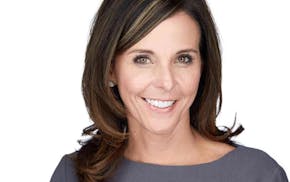John Dunlop launched his renewable-energy career amid oil embargos and the fledgling environmental movement of the 1970s.
The 45-year renewable-energy pioneer, who's an engineer and physicist, drives an electric-powered vehicle, lives modestly, speaks softly but authoritatively about the growing promise of a low-carbon economy increasingly powered by wind, sun and smart technology.
His fact-based view has been vindicated. We face a tremendous environmental challenge and economic opportunity.
Dunlop will chair the annual national conference of the American Solar Energy Society (ASES) in Bloomington this week.
The scientific consensus and volatile-weather manifestations of climate change over the last decade has moved science, industry and society, increasingly, to conclude our generation must shift to renewable-energy sources to avoid environmental disaster.
"We're not piddling around," said Dunlop, who agreed to chair the 300-attendee national conference only after the ASES board agreed to focus on actions to move the needle ASAP. "Our focus is taking urgent action using renewable energy to eliminate carbon emissions from electrical generation and transportation and new buildings within two decades."
The vision, environmental outlook and economics are shading green in Minnesota, leading the Midwest in the transition to renewable energy, efficiency and related job growth.
The cost of solar energy has dropped by 80% over the last decade and wind by about 65% since 2009, according to Dunlop and Gregg Mast, executive director of business-led Clean Energy Economy Minnesota. The state's utilities, led by Xcel and Great River, are exceeding their goals for renewable-energy use and for cutting carbon emissions. The emissions are the No. 1 contributor to global warming and the resultant weather extremes that already are extracting a disastrous price.
Renewable-energy advocates expect the state's burgeoning solar industry to increase its share of electrical output from 2% to 10% over the next decade.
Gov. Tim Walz and Ben Fowke, the CEO of Xcel Energy, are embracing the goal of a carbon-free electrical grid by 2050, at a time when wind is becoming the cheapest form of electricity in Minnesota, thanks to scale and a modernizing electric grid.
"The way I look at the 2050 goal, we have 30 years to get there," said Fowke, who runs one of the utilities with the biggest wind use in the U.S. Xcel has also been great for investors for 15 years. "I am open to anything that works cost-effectively."
Economies of scale
Under Fowke, Xcel is among the businesses that are embracing green technology as a path to future growth.
Xcel, Minnesota's largest utility, seeks 80% carbon-free power by 2030 using existing technology, including nuclear generation. Beyond that, the company is counting on advances that are largely on the drawing board to reach goals it announced in December.
Coal, the dirtiest fossil fuel, has declined from about two-thirds to 40% of the state's electricity generation. However, Xcel and other utilities plan more coal-plant closures, with that capacity replaced by wind, lower-carbon natural gas and solar power.
Minnesota boasts some of the country's best wind resources. Wind provides a fifth of electricity generation in the state and that share is growing.
New wind farms are as cheap as gas-fired power plants, even without federal tax subsidies for renewable energy, according to Bloomberg New Energy Finance. And there's no guarantee the price of imported natural gas will stay low.
The move to greener technologies and energy also has fueled Minnesota's economy, according to recent reports from Bloomberg and Minnesota Clean Energy Economy. Minnesota boasts 61,000 clean-energy jobs, led by two of the fastest-growing categories: solar and wind technicians. Overall, clean-energy job growth was 2.5 times faster than Minnesota's overall job growth in 2018.
And nearly 40% of clean-energy jobs are located in rural Minnesota.
Moreover, Minnesota-based Mortenson and Blattner Energy are the two largest builders of wind farms in the country. However, a majority of these green-energy and conservation-technology jobs are created by small businesses with fewer than 20 employees, Mast said.
"Conservation technology also is a bedrock of clean jobs in Minnesota," Mast said. That includes software firms that manage building energy controls. "And Minnesota last year also got half the new solar-energy jobs created in the 12-state Midwest region."
Mast, 43, is a former corporate financial analyst who was born about the time Dunlop, 74, began working with renewable energy. He said he enjoys seeing the wind farms and jobs created around his hometown of Blooming Prairie.
Dunlop, thoughtful, friendly and still lean, has worked in government, industry and as energy consultant. He still loves his work, driving to it in his all-electric Nissan Leaf. He notes that all energy comes from the sun, including wind. We are finally using it to grow a cleaner economy.
ASES conference attendees this week will tour the Twin Cities in electric-powered buses made by New Flyer of St. Cloud.
Neal St. Anthony has been a Star Tribune business columnist and reporter since 1984. He can be contacted at nstanthony@startribune.com.

St. Anthony: 'Patient' investing paying off for St. Paul's Hill Capital

Jennifer Smith, leader of Burnsville's Innovative Office Solutions, has died

St. Anthony: Medical professions in Minnesota need more people of color in their ranks



